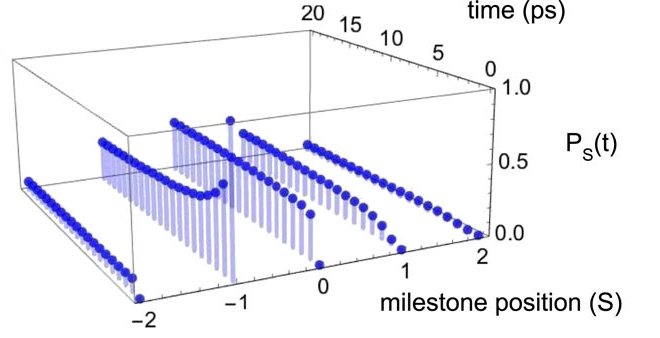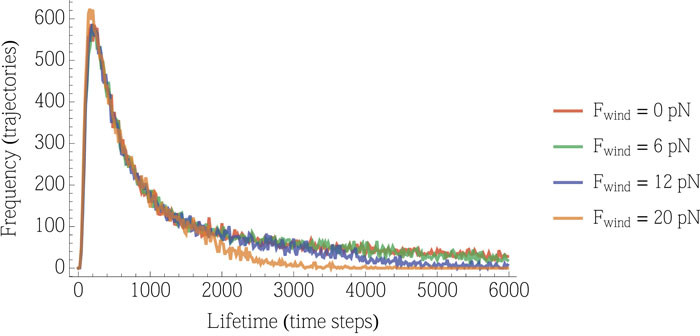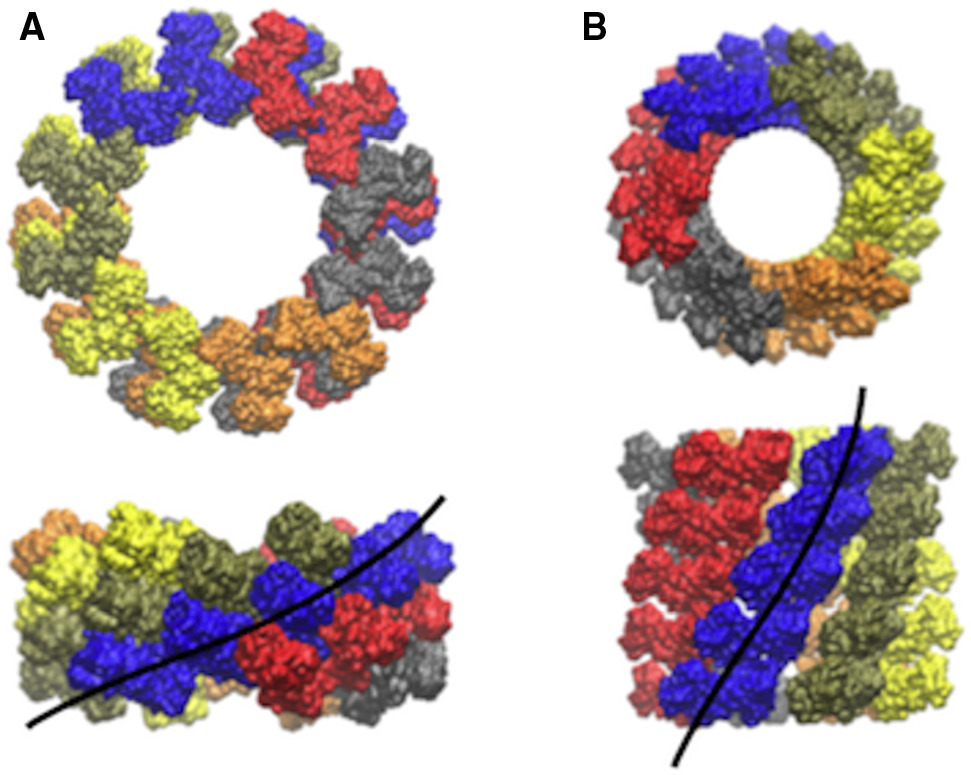Enhanced Sampling in Trajectory Space.




Many important equilibrium and kinetic properties of chemical systems (including proteins and nucleic acids) can be cast in terms of paths in multi-dimensional spaces. Sampling and optimization algorithms for conformational space can be generalized and adapted to the spaces characterized by paths. There is fertile ground for theoretical and computational work on several categories of paths, from chemical-reactions to the sequence space of evolving proteins dynamics. Trajectory reweighting techniques, developed within the group, based on stochastic path integrals are particularly useful to treat both computer simulations and single-molecule experimental traces.
Computer Simulations of Contractile Tails.
 Significant development in nanotechnology can come from understanding the mechanisms of biomolecular machines. Contractile tails are unique organelles present in certain biomolecular machines which aid in piercing a host membrane and injecting DNA (bacteriophages, proteins (type VI secretion systems), or ions (bacteriocins) inside the host. Although contractile tails are present in biomolecular machines from different evolutionary pathways, their structures are similar and it is hypothesized that their dynamics will be similar. Thus, understanding of contractile tails is of crucial importance in a variety of future applications: fighting bacterial resistance to antibiotics, DNA delivery, gene therapy, and protein transport across different membranes. While there has been a large effort to obtain structural data on such systems, little is known about their dynamics and energetics.
Significant development in nanotechnology can come from understanding the mechanisms of biomolecular machines. Contractile tails are unique organelles present in certain biomolecular machines which aid in piercing a host membrane and injecting DNA (bacteriophages, proteins (type VI secretion systems), or ions (bacteriocins) inside the host. Although contractile tails are present in biomolecular machines from different evolutionary pathways, their structures are similar and it is hypothesized that their dynamics will be similar. Thus, understanding of contractile tails is of crucial importance in a variety of future applications: fighting bacterial resistance to antibiotics, DNA delivery, gene therapy, and protein transport across different membranes. While there has been a large effort to obtain structural data on such systems, little is known about their dynamics and energetics.
Computer Simulations of DNA-Binding Machines.
 Protein-DNA interactions are essential in such crucial cellular functions as replication, repair, transcription or recombination. Many enzymes at and ahead of the replication fork affect large DNA fragments. For instance, topoisomerases undo DNA knotting. Others, like helicases and polymerases, are biomolecular motors: they use the energy of binding and/or hydrolysis of nucleotides to do mechanical work on the DNA fragments to which they bind. Another example is the machinery that compacts DNA inside the capsid of viruses. We have an avid interest in the theoretical description of these fundamental genetic processes through massively parallel computer simulations; here are a few highlights of our work from supercomputing agencies TeraGrid,
NERSC, Cray.
Protein-DNA interactions are essential in such crucial cellular functions as replication, repair, transcription or recombination. Many enzymes at and ahead of the replication fork affect large DNA fragments. For instance, topoisomerases undo DNA knotting. Others, like helicases and polymerases, are biomolecular motors: they use the energy of binding and/or hydrolysis of nucleotides to do mechanical work on the DNA fragments to which they bind. Another example is the machinery that compacts DNA inside the capsid of viruses. We have an avid interest in the theoretical description of these fundamental genetic processes through massively parallel computer simulations; here are a few highlights of our work from supercomputing agencies TeraGrid,
NERSC, Cray.
Dynamics-Function Relationships. Connections to NMR Relaxation.
An accurate measure of free energy, important for protein or RNA stability and function, or for ligand binding, has to include the entropy manifested in molecular flexibility. On the experimental side, this dynamic aspect is brought in by developments in solution NMR spectroscopy, which measures motion by relaxation experiments. Molecular dynamics simulation is an important tool to complement these measurements and to connect dynamics to entropy.